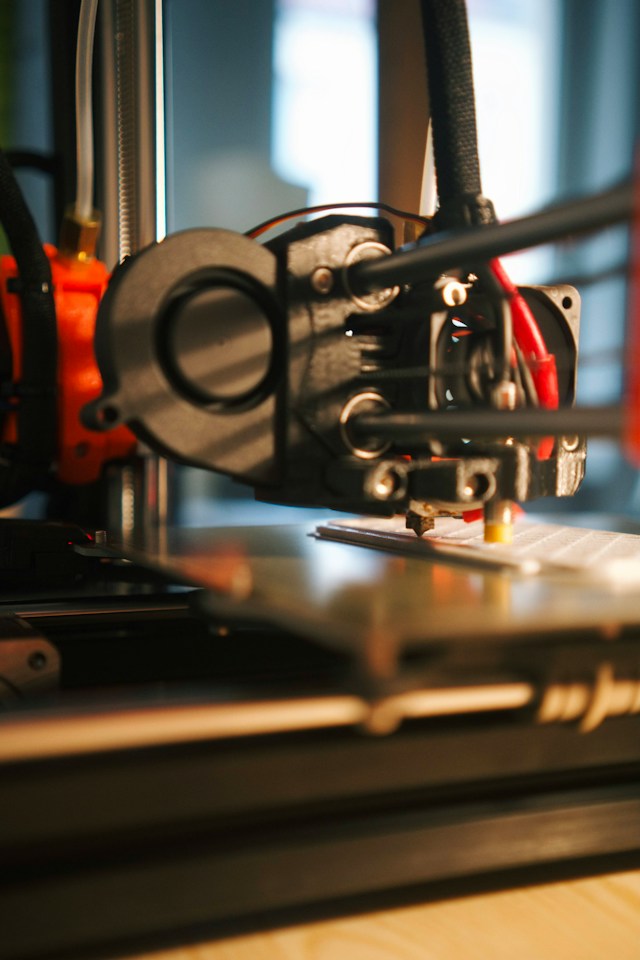
Mastering the Art of 3D Printing Tabletop Miniatures: A Comprehensive Guide to Elevate Your Gaming Experience
Faren ChancyShare
Tabletop gaming has evolved, and with it, the demand for highly detailed and customizable miniatures has surged. If you've ever marveled at the intricacy of tabletop miniatures and wondered about the craftsmanship behind them, this guide is your gateway into the world of 3D printing. In this comprehensive exploration, we'll unveil the secrets of digital sculpting, slicing software, and the transformative journey from a digital design to a tangible masterpiece. Armed with a 3D printer, you're poised to take your tabletop gaming experience to new heights, creating miniatures that will undoubtedly leave your friends in awe.
Chapter 1: Understanding the Basics of 3D Printing for Miniatures
1.1 The 3D Printing Revolution
-
Historical Overview: Explore the evolution of 3D printing within the tabletop gaming community. Understand how this technology has revolutionized miniature creation, providing gamers with unprecedented freedom and customization.
-
Impact on Miniature Design: Examine the profound impact of 3D printing on the design possibilities for tabletop miniatures. Discuss how designers can now experiment with intricate details, dynamic poses, and personalized elements that were once challenging or impossible with traditional manufacturing methods.
1.2 Types of 3D Printers
-
FDM vs. SLA Printers: Delve into the differences between FDM and SLA printers, emphasizing their strengths and weaknesses. Provide insights into the key factors to consider when choosing a printer based on budget, skill level, and the desired level of detail in miniature production.
-
Printer Selection Guide: Offer practical advice on selecting the right 3D printer for tabletop miniature printing. Discuss considerations such as build volume, resolution, and compatibility with different printing materials.
1.3 Materials for Miniature Printing
-
Printing Material Options: Explore various printing materials, including PLA, resin, and specialty filaments. Explain the characteristics of each material, such as durability, flexibility, and ease of post-processing, helping users make informed decisions based on their specific needs.
-
Material Considerations in Design: Discuss how the choice of printing material influences the design process. Provide tips on optimizing digital designs to take advantage of the unique properties of different materials, ensuring successful and aesthetically pleasing prints.
Chapter 2: Digital Sculpting: Crafting Miniatures in the Virtual Realm
2.1 Introduction to Digital Sculpting Software
-
Software Overview: Provide an in-depth look at popular digital sculpting software options, emphasizing their features and suitability for miniature creation. Address the learning curve associated with each software and guide users in choosing the right tool for their skill level and artistic preferences.
-
Workflow Integration: Explore the integration of digital sculpting software into the overall workflow, emphasizing the seamless transition from conceptualization to the creation of intricate details in the virtual realm.
2.2 Digital Sculpting Techniques
-
Tool Exploration: Break down the digital sculpting process into step-by-step techniques, exploring the use of various tools for creating details, textures, and dynamic poses. Provide practical tips on maintaining scale, proportions, and overall aesthetics during the sculpting process.
-
Detailing Strategies: Discuss advanced detailing strategies, such as using alpha brushes, layering, and combining different sculpting techniques to achieve professional-level results. Encourage experimentation to develop a unique artistic style.
2.3 Copyright and Licensing Considerations
-
Legal Framework: Explore the legal aspects of using digital designs, emphasizing the importance of respecting copyright and licensing agreements. Provide guidance on sourcing or creating original designs to ensure compliance with intellectual property laws.
-
Collaboration and Sharing: Discuss collaborative opportunities within the tabletop gaming community, considering platforms for sharing designs, participating in open-source projects, and respecting the rights of fellow designers.
Chapter 3: Slicing Software: Transforming Digital Dreams into Tangible Reality
3.1 The Importance of Slicing
-
Role of Slicing Software: Clarify the significance of slicing software in the 3D printing process, breaking down its role in translating digital designs into printable instructions for the chosen 3D printer.
-
Optimizing Settings: Guide users through the process of optimizing slicing settings for different printers and materials. Discuss parameters such as layer height, infill density, and support structures, ensuring users achieve optimal results for their specific needs.
3.2 Slicing Software Options
-
Software Comparison: Provide an overview of popular slicing software options, such as Cura, PrusaSlicer, and others. Highlight the key features, user interfaces, and customization options available in each, helping users make informed decisions based on their preferences and requirements.
-
Advanced Settings Exploration: Encourage users to explore advanced settings within slicing software, such as temperature control, speed adjustments, and adaptive layering. Empower users to fine-tune these parameters to enhance the quality of their prints.
3.3 Troubleshooting Common Issues
-
Problem Identification: Outline common 3D printing issues, such as layer adhesion problems, overhangs, and print warping. Provide troubleshooting strategies and practical solutions to address these issues, ensuring a smoother printing experience for users.
-
User Support Communities: Recommend online communities and forums where users can seek advice, share experiences, and collaborate on solving printing challenges. Emphasize the importance of a supportive community in the learning journey.
Chapter 4: From Digital Design to Tangible Miniature: The Printing Process
4.1 Preparing the 3D Printer
-
Calibration Steps: Offer a detailed guide on calibrating 3D printers for accurate prints. Cover aspects such as bed leveling, nozzle height adjustment, and ensuring proper adhesion to the print surface.
-
Material Preparation: Walk users through the process of loading and preparing printing materials, emphasizing the importance of proper material handling to avoid printing failures.
4.2 Printing Techniques
-
Layer-by-Layer Printing: Explain the layer-by-layer printing process, discussing the impact of layer height on print quality and detailing. Offer insights into choosing appropriate resolutions for different types of miniatures.
-
Post-Processing Strategies: Introduce post-processing techniques for refining printed miniatures. Discuss methods such as sanding, filling, and smoothing to enhance the final aesthetic and feel of the miniature.
4.3 Finishing Touches
-
Painting and Detailing Techniques: Explore techniques for painting and detailing 3D-printed miniatures, covering topics like priming, layering, and washes. Provide tips on achieving realistic and visually stunning results that bring the miniature to life on the gaming table.
-
Sealing and Protecting: Guide users through the final steps of sealing and protecting their painted miniatures, ensuring durability and longevity. Discuss sealants and protective coatings suitable for different printing materials.
Conclusion:
-
Encouraging Creativity: Reinforce the idea that 3D printing for tabletop miniatures is not just a process but a creative journey. Emphasize the importance of experimentation, continuous learning, and embracing the evolving landscape of 3D printing technology.
-
Showcasing Achievements: Inspire users to proudly showcase their 3D-printed miniatures on gaming tables, social media, and local gaming communities. Highlight the joy of sharing one's creations and contributing to the vibrant and ever-growing world of 3D-printed tabletop gaming.
